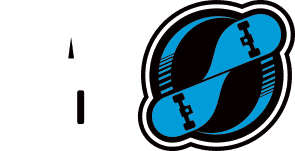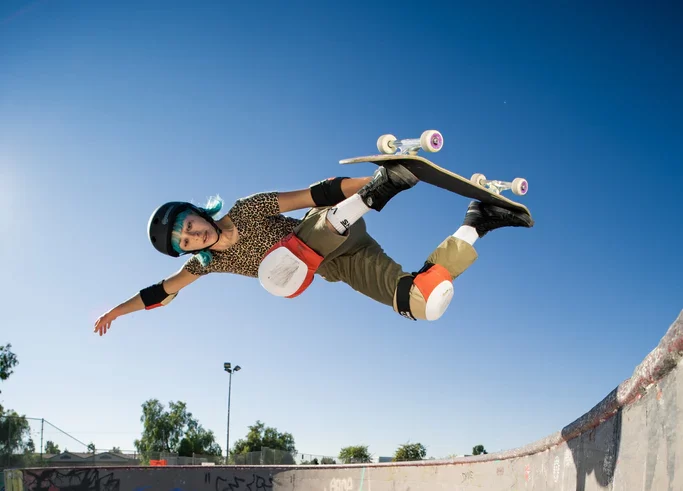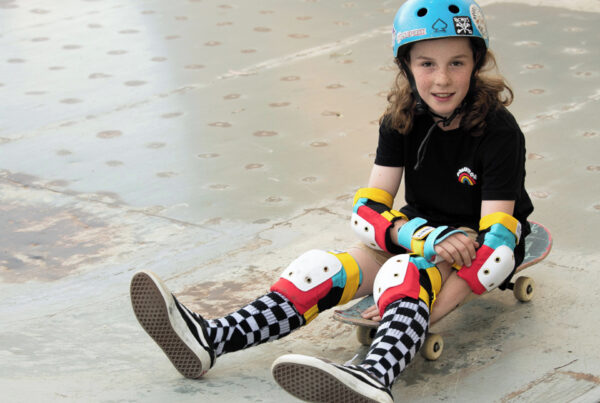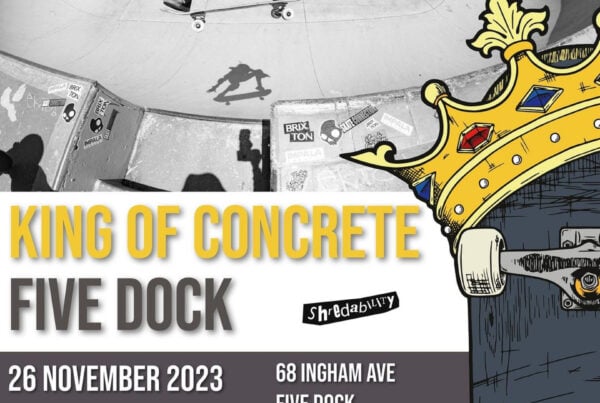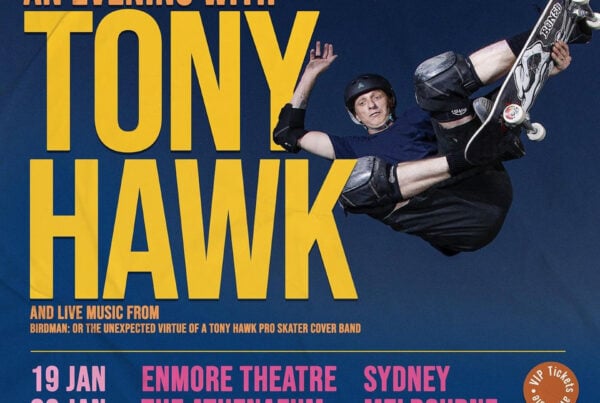Protect Your Head with Our Expert Advice on Finding the Perfect Skateboarding Helmet
Skateboarding is an exhilarating activity for riders of all ages, but it’s crucial to prioritise safety. While skateboarding, you never know when that one day might come when you need a helmet, so it highly recommended to always wear one. Even top-level pros like Tony Hawk and Mike Vallely still wear helmets when they skate because they know the risks.
Helmets are the most essential and common protective gear for skateboarding, and they’re required for all skaters under 18 in Olympic and Street League events. Many skateparks in Australia also require helmets to be worn.
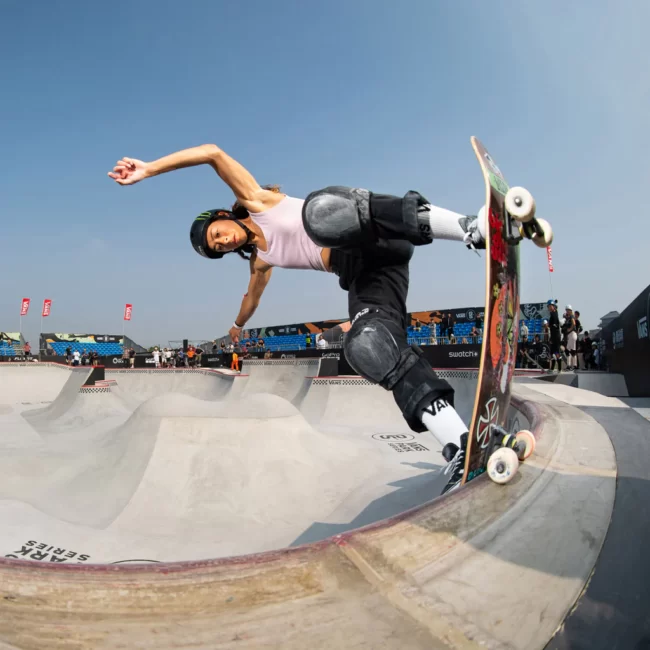
Lizzie Armanto performing a backside bluntslide in a skatepark
Why Opting for a Skate Helmet is Essential for Protection
When choosing a helmet for skateboarding, it’s best to opt for a dedicated skate helmet instead of repurposing an old bike or multisport helmet because bike helmets are not designed to protect against the type of falls that may occur while skateboarding. Skate helmets have a harder shell and a softer foam liner, offering better protection for impacts to the head. They also cover more of the back and sides of the head, providing extra protection in case of a fall. Skateboard helmets are designed to withstand multiple smaller impacts – rather than one big one.
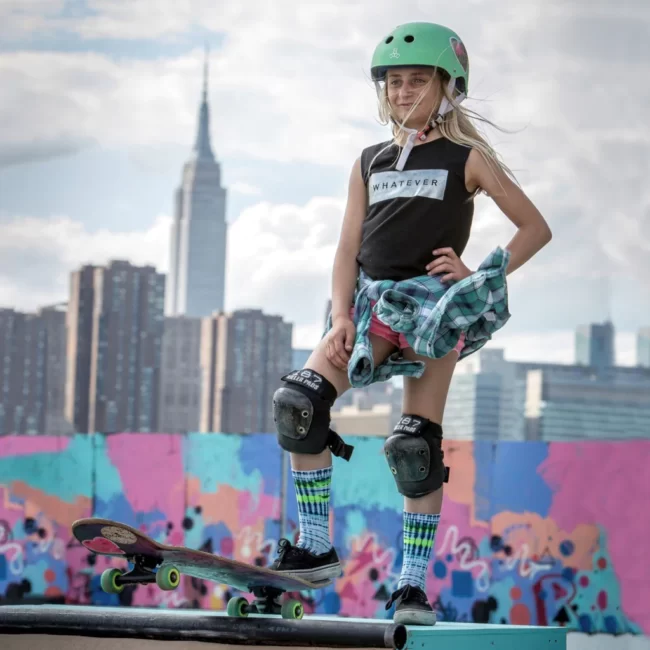
Young female skater wearing a green Triple 8 helmet
Avoiding Common Issues with Kids’ Helmets.
Common issues with kids’ helmets purchased at low-end department stores or sports chains include poor strap design with side buckles that don’t stay in place, causing the strap to be too loose to hold the helmet in position. Additionally, many kids wear helmets that no longer fit them, which means they sit on top of their head instead of encasing and protecting their head’s top and sides.
When buying a skate helmet, it is highly recommended to purchase from a dedicated skate shop or skate school because they offer a wider selection of helmets designed specifically for skateboarding. They also have knowledgeable staff who can help you find the right helmet for your needs.
If you or your child is enrolled in a lesson with us, they can use our helmets (and other skateboarding gear) free of charge and trial different types and sizes. Alternatively, Contact Us via email or phone and we can give expert advice on sizing and choosing suitable equipment.
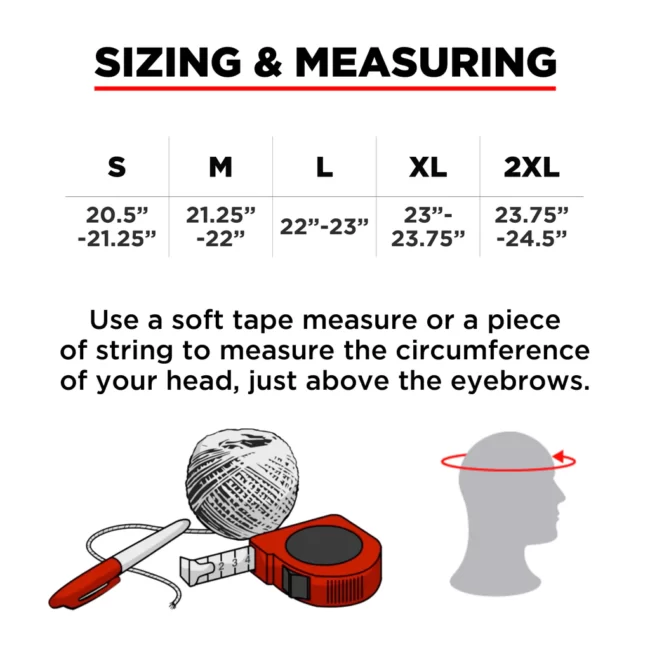
187 Helmet Sizing Chart
Purchasing a Helmet Online
When looking for a skate helmet online, choose the right size based on the manufacturer’s sizing chart, measuring the circumference of your head just above the eyebrows. Different brands may have slightly different sizing and helmet shape, so it’s always a good idea to try on a helmet before making a purchase.
Many reputable skate helmet brands are available on the market, including TSG, Pro-Tec, Triple 8, S1, and 187. These brands offer a range of helmet styles and sizes to fit any budget and preference.
Types of Skateboarding Helmets: A Comparison Guide
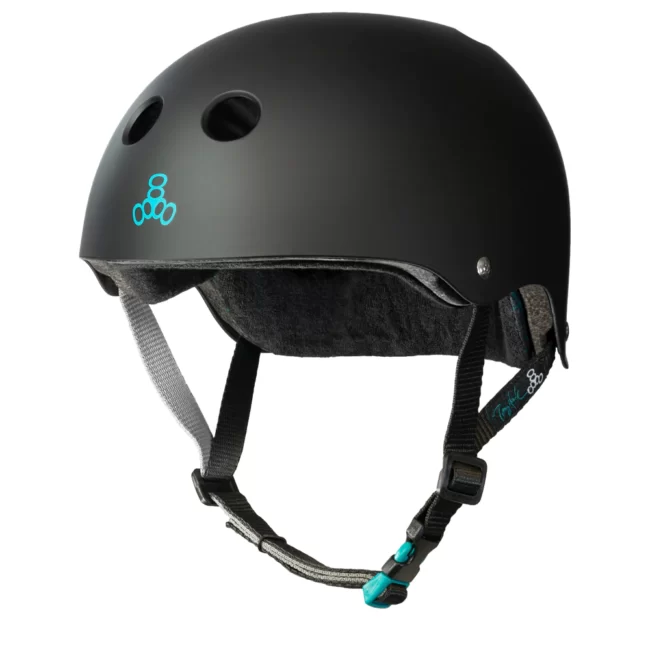
Classic shaped Triple 8 Certified Sweatsaver Helmet
Classic Helmets
Classic helmets: are the modern take on the classic skate helmet design. They are the most common type of skateboarding helmet and offer good protection to most of the head. Classic helmets are lightweight and offer good ventilation to keep the rider cool. One drawback is that they leave the ears uncovered, which may not be ideal for some riders who prefer additional protection.
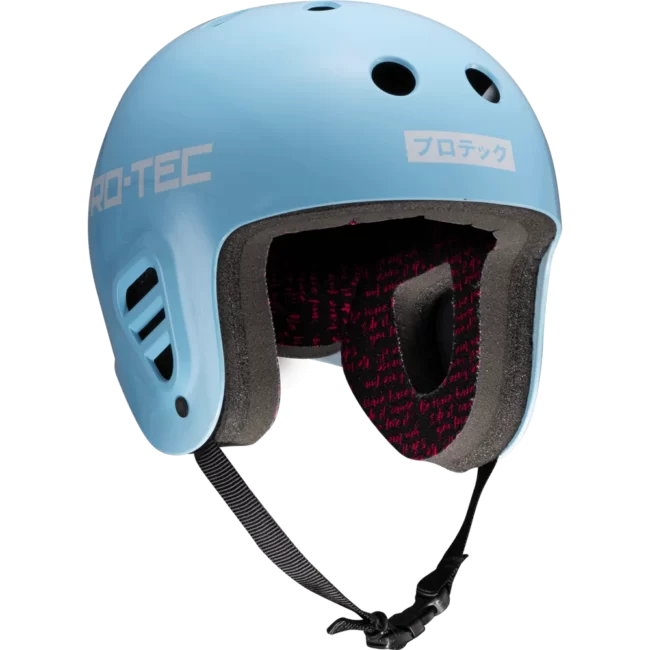
Retro-inspired Skye Brown Pro Model Protec Full-Cut Helmet
Full-Cut Helmets
Full-cut helmets: have a retro appeal, but they’re not as popular as classic helmets. They cover more of the head than classic helmets and provide more protection on the sides and back of the head. However, they’re not as good as classic helmets at providing airflow, which can make them hotter to wear. Full-cut helmets are ideal for riders who prioritise protection and don’t mind the added weight and reduced ventilation.
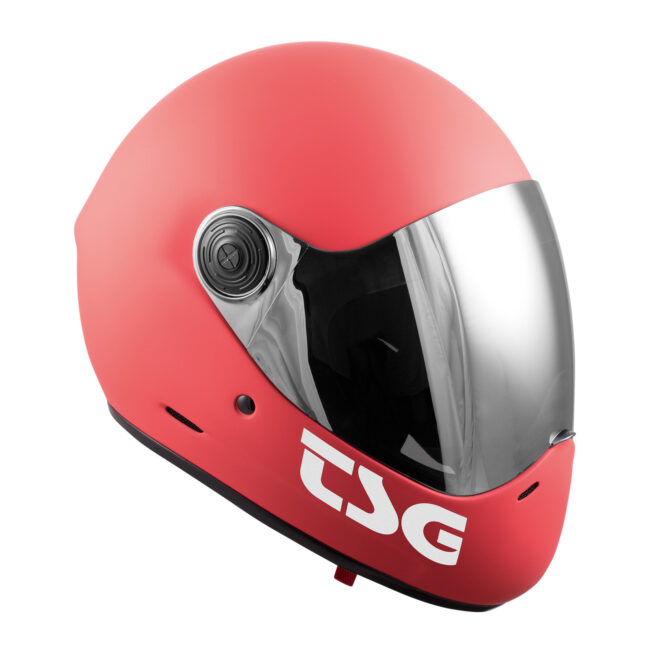
TSG Pass Pro full-face helmet for downhill skateboarding
Full-Face Helmets
Full-face helmets: are the highest protection models for the most extreme modes of skateboarding, similar to those used by motorcyclists. They offer the most coverage and protection of any helmet type and are suitable for downhill and freeriding. However, they may not be ideal for young or inexperienced skaters because the weight of the helmet can make them more top-heavy, which can affect balance and stability. Full-face helmets are not commonly seen at the skatepark.
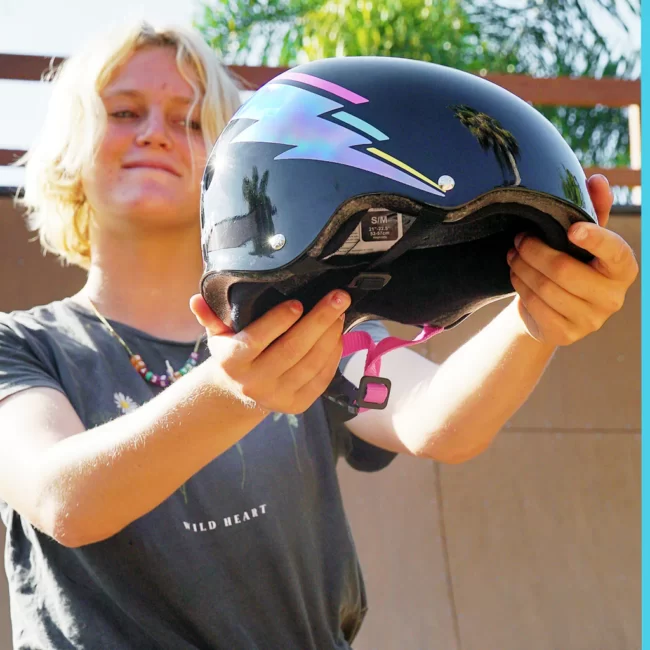
Bryce Wettstein with a Triple 8 Certified Sweatsaver Helmet
Freedom of Choice in Helmet Selection
Overall, the choice of helmet type depends on the rider’s personal preferences and the type of skateboarding they’ll be doing. Classic helmets are great for general skateboarding and offer a good balance of protection and ventilation. Full-cut helmets are ideal for riders who prioritise protection and don’t mind the added weight and reduced ventilation. Full-face helmets are best suited for extreme skateboarding and offer the most protection but aren’t ideal for all riders.
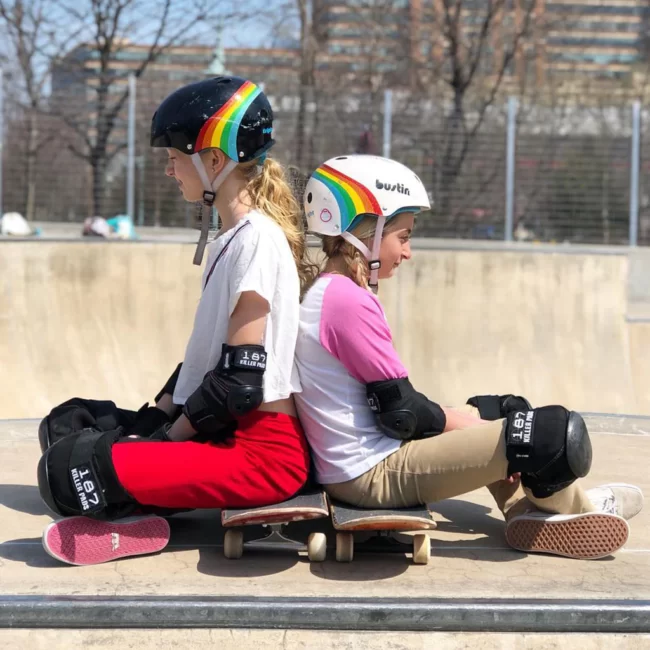
Two young skaters sitting back to back at the skatepark
When to Replace Your Skate Helmet
It’s vital to replace your helmet if it has received a solid impact or was involved in a major stack. While skate helmets are designed to cope with a reasonable level of wear and tear, if the helmet sustains a solid impact, it may not be as effective in protecting against further impacts. Over time, different parts of the helmet may break, rust, or go missing, so it’s a good idea to replace your helmet from time to time to keep up with growth or ensure it’s in full working order and provides the best level of protection.
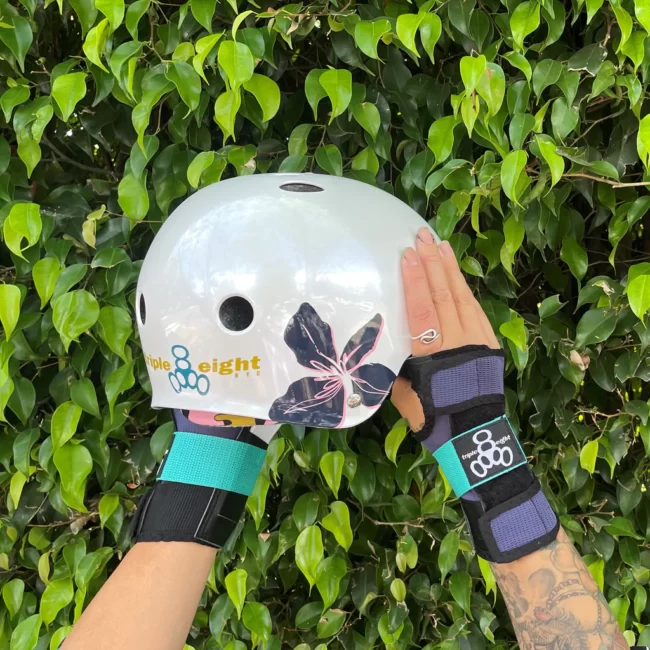
A helmet from Triple Eight Sweatsaver Colour Series
Proper Helmet Care: Keeping Your Helmet in Top Condition
Proper care of your helmet is essential to ensure that it can protect you when you need it most. Avoid dropping your helmet unnecessarily as this can weaken its protective capabilities. From time to time, you may need to clean your helmet to remove sweat, dirt, or other debris. We recommend using a non-chemical based cream cleanser to avoid damaging the helmet’s materials. Chemical cleansers can for example affect the straps and make the material overly soft, causing it to loosen off too easily in the chin buckle.
Many brands have removable and washable soft foam liner, and it’s a good idea to clean these regularly, especially after extended use. Some brands include spare sets of liners, which can come in handy. Proper care of your helmet will ensure that it continues to provide optimal protection for years to come.
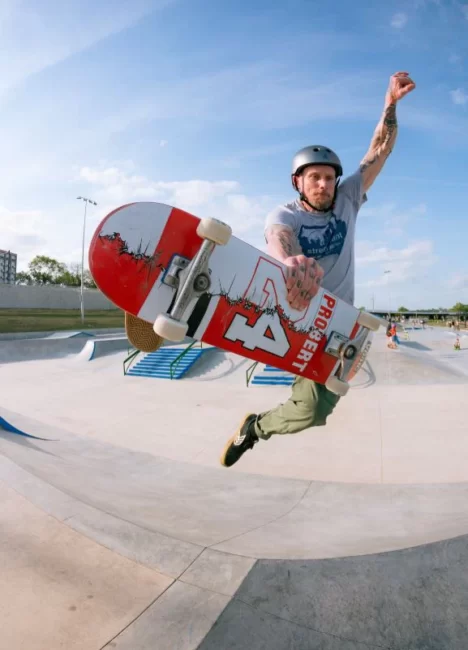
Mike Vallely tweaking a frontside boneless over a hip.
The Stigma of Helmet Use in Skateboarding Culture
Despite the safety benefits of wearing a helmet, many older street skateboarders and park skaters still do not consider them cool or necessary. There is a common misconception that helmets are for beginners, and that they may not be ‘core’ enough if they wear one. However, there are some notable exceptions to this stereotype. Pro skater Mike Vallely has been a vocal advocate for helmet use in street skateboarding, with his “Get Used To It” campaign aimed at normalizing helmet usage among the skateboarding community. Another great example is Andy Anderson, who has become a role model for younger skaters by embracing a unique style and wearing a helmet during his competition runs. Fortunately, the younger generations are more safety-conscious and less concerned with what is considered cool. As a result, they are more likely to continue wearing a helmet as they grow older.
‘A lot of people have asked,
“Mike why do you wear a helmet now?”
You know, to protect my head.
“But you never wore a helmet before…”
I do now, GET USED TO IT’– Mike V.
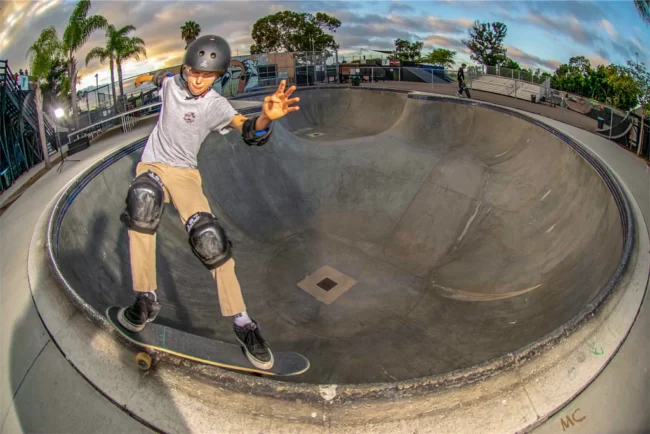
Stylish and powerful frontside smith grind in a concrete bowl
The Confidence Factor
How a Helmet Can Help You Reach Your Skateboarding Goals
Wearing a helmet isn’t just about protection, it’s about confidence. It’s the feeling of knowing that you’re protected from unexpected impacts, and that you have the ability to push your limits without fear of injury. Whether you’re tackling new terrain or trying to nail a tricky move, a helmet can give you the peace of mind you need to take your skating to new heights. It’s the extra edge you need to boost your confidence and take on challenges that once seemed impossible. So go ahead, strap on that helmet, and let it be your ticket to ride with confidence and style.
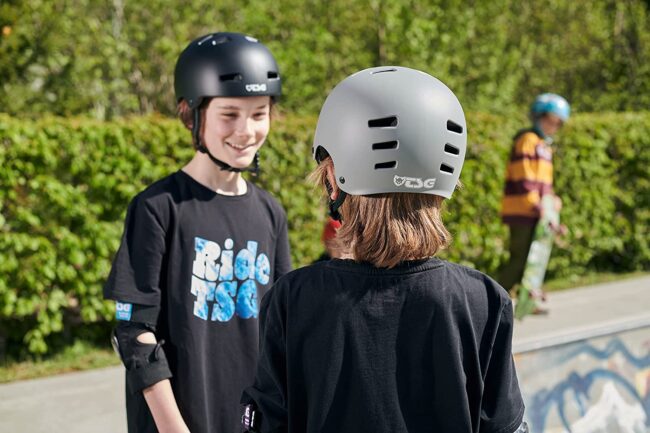
Two young skaters having a friendly conversation at a skatepark, both wearing TSG helmets for protection.
Prioritising Safety in Skateboarding
In conclusion, safety is a top priority when it comes to skateboarding. The use of a well-fitting, properly maintained helmet is critical to prevent head injuries. Remember that different types of helmets provide different levels of protection and ventilation, so choose the right one based on your individual needs and preferences. Proper care is also important to ensure maximum effectiveness. By prioritising safety, you can enjoy the thrill of skateboarding while reducing the risk of serious injury.
